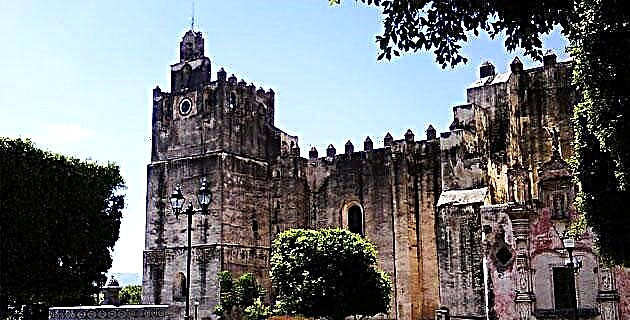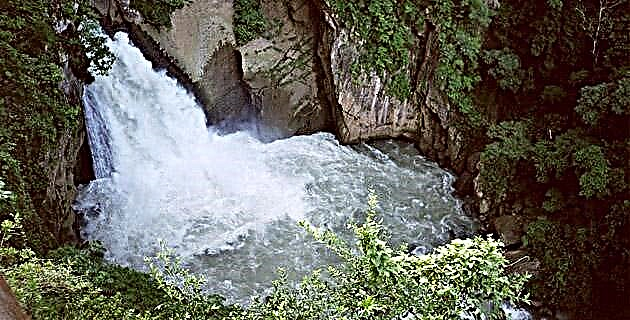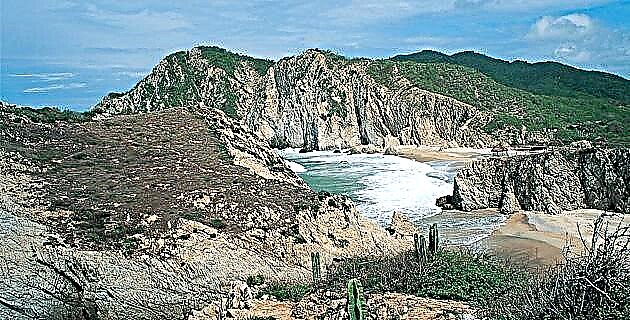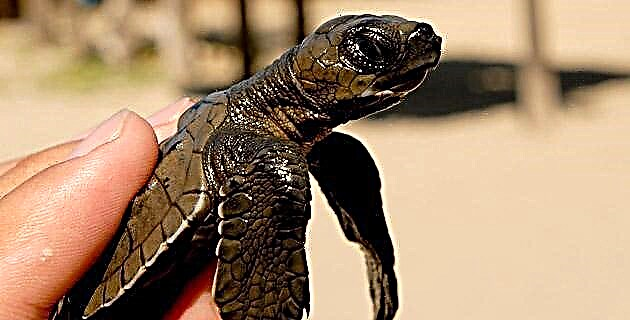
A female sea turtle swims solitary towards the coast; She feels a strong urge to get out of the sea and crawl on the sand of the same beach where she was born nine years ago.
A female sea turtle swims solitary towards the coast; She feels a strong urge to get out of the sea and crawl on the sand of the same beach where she was born nine years ago.
In the morning he stayed close, in the company of other females and some males who began to arrive from as far away as the coasts of Central America. Many of them courted her, but only a few managed to mate with her in the early hours of the morning. These "romances" left some marks and scratches on his shell and skin; However, when it begins to get dark, all memory has faded before the only impulse that governs their behavior at that moment: to nest.
To do this, he chooses a point on the extensive coastline in front of him and throws himself on the waves until he reaches the beach. Fortunately, the tide is low and of little intensity, since three days have passed since the moon reached the last quarter phase and at this time its influence on the tides has diminished. This makes it easier to get out of the sea, not without great effort, since its fins, which allow it to move agile and fast in the water, barely manage to move it on the sand.
It slowly crawls across the beach on a warm, dark night. Pick a point where you start digging a hole about half a meter deep, using your back fins. It is the nest where it lays around 100 white and spherical eggs, which it then covers with sand. These eggs were fertilized by the males that accompanied her during the previous season.
Once the spawning is finished, it "conceals" the nesting area by removing the sand that surrounds the pit, and with difficulty begins the return to the ocean. This whole process took him about an hour, and over the next few days he will repeat it one or two more times.
This wonderful event of perpetuation of its species is just the beginning of an impressive phenomenon of nature, which is repeated year after year, at the same time, on this beach.
This is the massive nesting of the olive ridley turtle (Lepidocheys olivacea) on the most important spawning beach for this species in the Eastern Pacific Ocean: Escobilla, in the Mexican state of Oaxaca.
This phenomenon, known as “arribazón” or “arribada” due to the large number of turtles that come out to lay their eggs simultaneously, begins the nesting season, which begins in June or July and generally ends in December and January. At this time there is an average of one arrival per month, which lasts about five days. One or two days before the phenomenon occurs, during the night, solitary females begin to come out to the beach to spawn. Gradually their number increases during the following nights until, on the day of the arrival, thousands of turtles come out to nest on the beach during the afternoon, their number increases as night falls. The next morning its presence decreases again and again increases in the afternoon and at night. This process is repeated during the days of the arrival.
It has been estimated that almost 100,000 females arrive at Escobilla per season to nest. This impressive figure is not as impressive as the number of eggs deposited on the beach during each season, which could well be close to 70 million.
The most shocking thing may be, however, that less than 0.5 percent of hatchlings make it to adulthood, since the few that manage to avoid the dangers of the beach (dogs, coyotes, crabs, birds, humans, etc.) and reach the ocean, they will have to face many other dangers and enemies here as well, before becoming adult turtles (at 7 or 8 years of age) that, after reaching sexual maturity, begin reproductive periods that will lead them , with inexplicable precision and accuracy, to Escobilla, the same place where they were born.
But what makes the olive ridley turtle invariably return to nest here year after year? The answer is not precisely known; However, the clear and fine sand of this beach, its wide platform above the level of the tides and its somewhat steep slope (greater than 50), have favored the most suitable conditions for the nesting of these turtles at this site.
Escobilla is located in the central part of the coast of the state of Oaxaca, -in the section between Puerto Escondido and Puerto Ángel. It has an approximate total length of 15 km, by 20 wide. However, the area that borders the Cozoaltepec river bar to the west, and the Tilapa river bar to the east and which covers approximately 7.5 km of coastline, is the main nesting area.
Hundreds of thousands of olive ridley turtles have come to this beach annually, to nest and thus initiate the biological cycle that has allowed them to perpetuate their species over thousands of years.
Source: Tips from Aeroméxico No. 1 Oaxaca / Fall 1996











